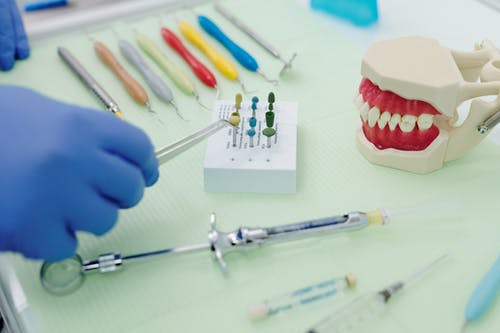The term “cap” or crown is a dental treatment that helps strengthen or enhance the appearance of the tooth by covering the visible portion of its surface. A bridge is a type of dental treatment utilized to restore the appearance of one or several teeth missing. It comprises the use of artificial teeth to help support the crowns on the opposite side. There are several materials to make crowns and bridges to enhance teeth’ form and strength.
Implants, such as crowns and bridges, are among the most frequently used dental options these days. Dental professionals can assist you in obtaining the dental bridges or crowns you require to create a smile you’re proud of since they are commonly used to help patients restore their teeth’s appearance.
Different Types of Crowns and Bridges
Crowns or caps are made of metal, porcelain bonded to metal or porcelain alone. They’re typically made in a laboratory. There are many kinds of bridges that are possible to construct:
Cantilever Bridges
Cantilever bridges are the most effective option if there are just adjacent teeth to one side of a missing tooth or teeth. Utilizing this technique in the rear of the mouth may cause too much pressure on neighboring teeth and damage them.
Maryland Bridges
This type of bridge (also called a resin-bonded bridge) consists of teeth and gums supported by a metal or porcelain framework. Its metal or porcelain wings are attached together with natural teeth on one side.
Traditional Bridges
Traditional bridges require the creation of a crown to cover an implant tooth or implant placed on one side with a pontic between. Porcelain-fused-to-metal or ceramic-based bridges are the most popular types of bridges.
Signs You Need Dental Crowns and Bridges
Cracked, damaged, discolored, or missing teeth and vulnerable to decay due to fillings or root canal treatment might require crowns. In other instances, crowns can be utilized to help support the construction of a dental bridge or construct the crown to cover an implant within the bone.
A bridge is designed as a replacement for one or more missing teeth. Preventing teeth that are adjacent to the teeth from shifting position could help in maintaining the shape of your face. This single tooth bridge treatment that’s one of the most common can also help a more confident smile, correct your bite, and assist with chewing and speech problems.
Preparing the Teeth for a Crown or Bridge
Your dentist will inspect your teeth and perform X-rays to assess the pulp, root, and bone. Your dentist will also clean your teeth. If you’re receiving a dental-colored crown or bridge, the St. Catharines dentist will pick the shade that will match your natural teeth precisely. Before the crown is put in place, it is recommended to undergo a root canal treatment when an infection is at risk.
Dental teeth and the gums will be anesthetized before a crown is placed, and the tooth surfaces are grind using the drill. A filling could be required if a tooth is badly damaged or has decayed.
To create a 3D image of your freshly cleaned teeth and the soft tissue, the dentist uses cement or putty to make an impression on your mouth.
After they have taken the impression or the scan, it’s taken to a lab where the crown or bridge is constructed. It usually is between two and three weeks. In the meantime, the dentist will cover the newly prepared teeth with a temporary acrylic crown, stainless steel crown, or bridge.
The dentist will take off the temporarily-installed crown or bridge once the permanent crown is in place to test the suitability and shade. It can also be utilized to permanently fix your crown and bridge.
Certain dental practices can design and install a permanent crown within a single visit using special software and equipment without the need for a temporary crown.
Taking Good Care of Your Restoration
Maintaining healthy dental hygiene and abstaining from habits such as teeth grinding and nail-biting can extend the lifespan of your restoration and ensure that you are in good dental health. Additionally, you will be taught specific ways to take care of the surface of your crown and bridge.
The Bottom Line
Many patients have reported increased confidence due to dental crowns and bridges. Since dental bridges and crowns improve, they appear more similar to the appearance of your natural teeth. Technology advancement has led to more patients benefiting from full smile restorations.




